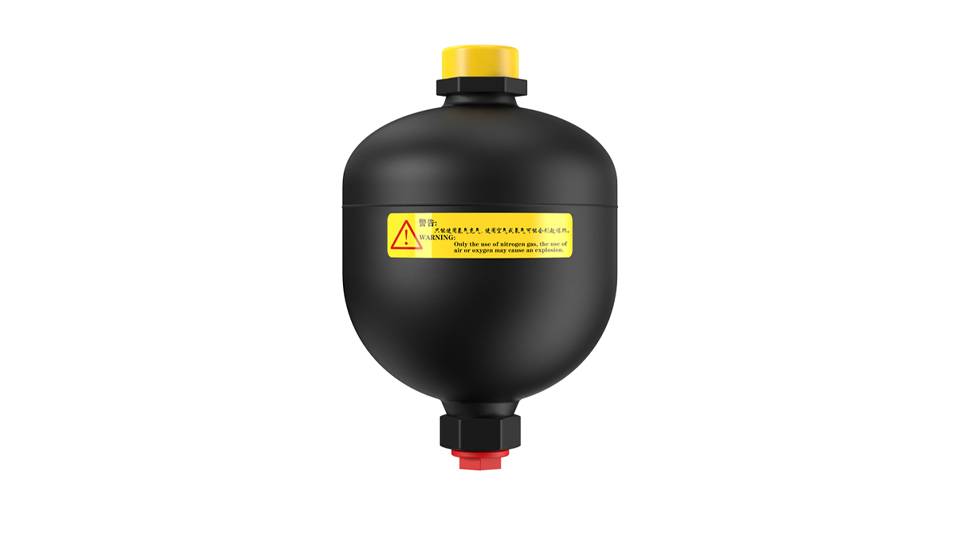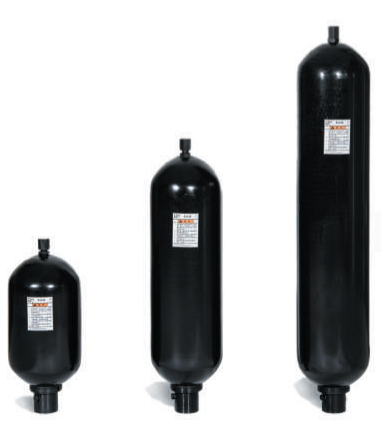There are many types of accumulators. Milehertz offers three types: diaphragm accumulators, bladder accumulators, and piston accumulators. You can choose the most suitable one based on your specific operating conditions, needs, budget, and other factors.
Diaphragm accumulators use a central rubber diaphragm to separate the gas and liquid. This structure gives them extremely fast response speed, making them suitable for high-frequency cycling and excellent for absorbing pulsation. They are also compact and easy to install. However, diaphragm accumulators have smaller capacities. Milehertz offers accumulators with capacities ranging from 0.075L to 3.5L.

Bladder accumulators are similar to diaphragm accumulators, both using a rubber diaphragm to separate the gas and liquid. Capacities can reach up to 250L. They are also suitable for absorbing pulsation or shock from hydraulic pumps. Bladder accumulators can also be used to compensate for leaks, maintain pressure, provide emergency energy, and store energy. If the internal bladder of a bladder ruptures, a replacement can be purchased for repair.
The working principle of a piston accumulator: A floating piston separates nitrogen and oil. The piston is equipped with a seal.
Large energy storage capacity is its core advantage. Common applications include:
As an auxiliary energy source for large equipment (such as injection molding machines and presses) that requires large amounts of oil in a short period of time.
In intermittent operating systems, the pump can be activated intermittently to charge the accumulator, saving energy and reducing consumption.
Due to its piston-type structure, it can achieve a higher pressure resistance (up to 99 MPa) and maintain long-term stability.
In summary, diaphragm accumulators are a cost-effective option for hydraulic or fluid systems that require multiple functions, such as energy storage, vibration damping, or pulsation attenuation. The structural design of bladder accumulators allows for flexible adaptation to varying operating conditions and media requirements, particularly in energy storage, pulsation damping, or shock absorption. Piston accumulators excel in large energy storage capacity and high-pressure resistance.